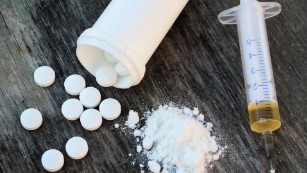From CNN. Click here to view the entire article/report.
By Nadia Kounang
As the opioid overdose epidemic continues to surge, public health officials and first responders have turned to naloxone, the drug that reverses overdose, to help combat the rising tide. New research from Brigham and Women’s hospital in Boston shows its effectiveness.
A review of emergency medical services data from Massachusetts found that when given naloxone, 93.5% of people survived their overdose. The research looked at more than 12,000 dosages administered between July 1, 2013 and December 31, 2015. A year after their overdose, 84.3% of those who had been given the reversal drug were still alive.
‘We saved them’
“With this reversal agent, we’re saving the vast majority of people,” said Dr. Scott Weiner, lead author of the study and an emergency physician at Brigham and Women’s Hospital. “These are people who got naloxone by ambulance. So we saved them. The lesson learned is not that naloxone is failing; it’s working.”
But it also means that once saved from an overdose by EMS, a patient had about a 1 in 10 chance of not surviving a year. About 35% of those who were dead a year later died of an opioid overdose. And that should be a concern, Weiner said: “It doesn’t treat the underlying problem.”
The findings are being presented Monday at the American College of Emergency Physicians’ annual conference in Washington.
In 2014, only 12 states allowed basic EMS staff to administer naloxone for overdose. Today, laws in every state allow the drug to be administered by anyone, from a physician to a family member.
Dr. Sharon Stancliff, an expert on opioid overdose prevention, said that although it has long been known that naloxone is effective at keeping people alive, it was the first time she recalled seeing such specific numbers regarding its effectiveness.

